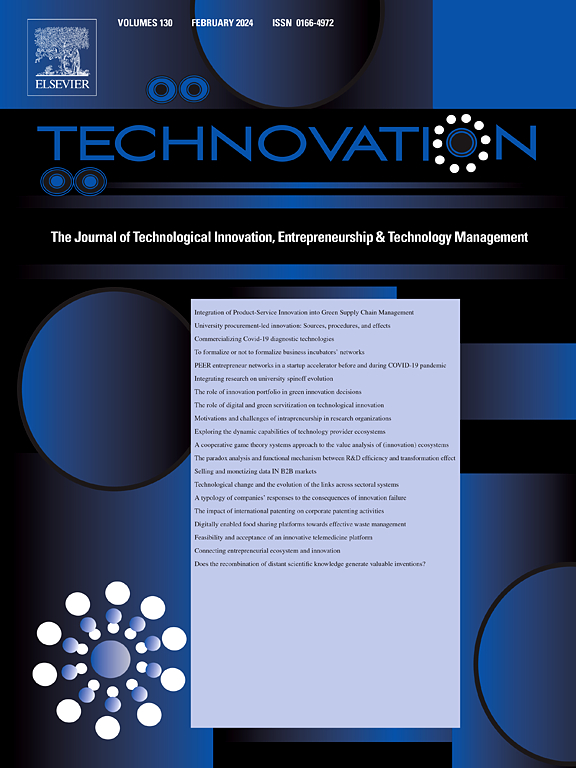创新的社会数学定义——与普通变化的区别
IF 10.9
1区 管理学
Q1 ENGINEERING, INDUSTRIAL
引用次数: 0
摘要
许多研究者对创新的概念进行了界定,但没有达成共识。但在任何情况下,创新都与新事物或实现新事物的过程有关。由于“新”是一个主观的限定,创新的概念定义很弱。因此,创新和非创新(“普通变革”)之间的区别就变得不清晰了。这不仅阻碍了创新研究和创新理论的发展,而且可能导致对创新管理不善的代价高昂。为了推进创新的定义,我们区分了两种根本不同类型的变化:系统参数的变化与系统维度的扩展。我们将第一种类型定义为普通或一阶变化,将第二种类型定义为创新或二阶变化。我们解释了如何将创新的数学定义与论证和讨论的社会过程结合起来,有条不紊地进行操作。通过对新建房屋提高能源效率要求的案例、商业转型案例和青少年关爱权力下放案例,我们展示了创新的社会数学定义如何有助于更准确地研究创新,并理解普通变革与创新在规划、行动和学习动态方面的根本区别。我们的社会数学定义将创新管理定位在战略变革管理、质量管理和标准化管理之后,并且很容易适用于研究人员、创新管理者和政策制定者。本文章由计算机程序翻译,如有差异,请以英文原文为准。

A socio-mathematical definition of innovation – The distinction with ordinary change
Many researchers have defined the concept of innovation, without reaching consensus. But in any case an innovation concerns something new or the process of achieving such a thing. Since ‘new’ is a subjective qualification, the concept of innovation is weakly defined. As a consequence, the difference between an innovation and not-an-innovation (‘ordinary change’) stays unclear. This not only hinders the research of innovation and the advancement of innovation theory, but also may lead to costly mismanagement of innovation. To advance the definition of innovation, we distinguish two fundamentally different types of change: the change of the parameters of a system versus the expansion of its dimensions. The first type we identify as ordinary or first-order change and the second type as innovation or second-order change. We explain how our mathematical definition of innovation, combined with social processes of argumentation and discussion, can be operationalized methodically. Using a case of tightening the energy efficiency requirements for newly built houses, a case of business transformation, and a case of decentralization of youth care, we demonstrate how our socio-mathematical definition of innovation helps to study innovation more accurately and to understand the fundamental differences between ordinary change and innovation in their dynamics of planning, acting, and learning. Our socio-mathematical definition positions innovation management next to strategic change management, quality management and standardization management, and is easily applicable for researchers, innovation managers and policy makers.
求助全文
通过发布文献求助,成功后即可免费获取论文全文。
去求助
来源期刊

Technovation
管理科学-工程:工业
CiteScore
15.10
自引率
11.20%
发文量
208
审稿时长
91 days
期刊介绍:
The interdisciplinary journal Technovation covers various aspects of technological innovation, exploring processes, products, and social impacts. It examines innovation in both process and product realms, including social innovations like regulatory frameworks and non-economic benefits. Topics range from emerging trends and capital for development to managing technology-intensive ventures and innovation in organizations of different sizes. It also discusses organizational structures, investment strategies for science and technology enterprises, and the roles of technological innovators. Additionally, it addresses technology transfer between developing countries and innovation across enterprise, political, and economic systems.
 求助内容:
求助内容: 应助结果提醒方式:
应助结果提醒方式:


